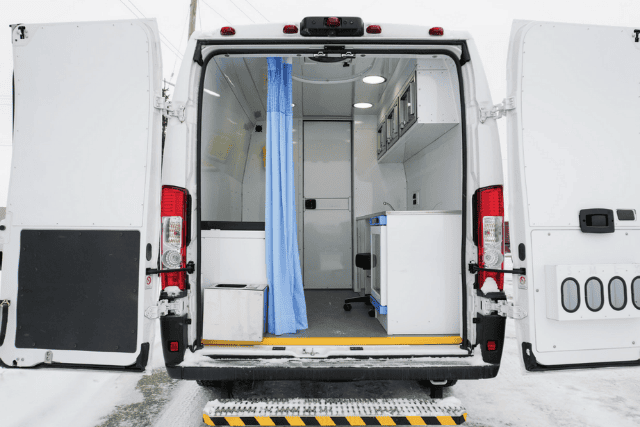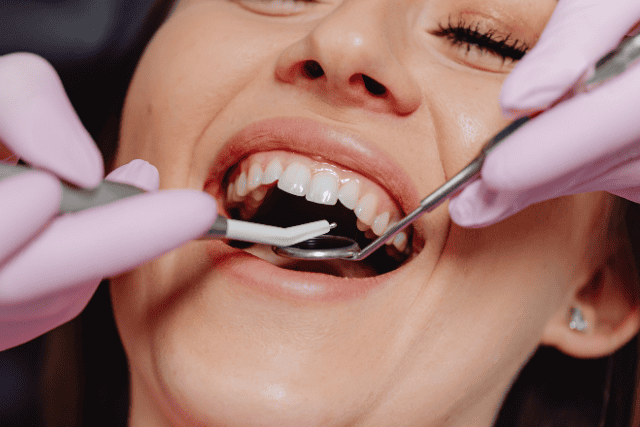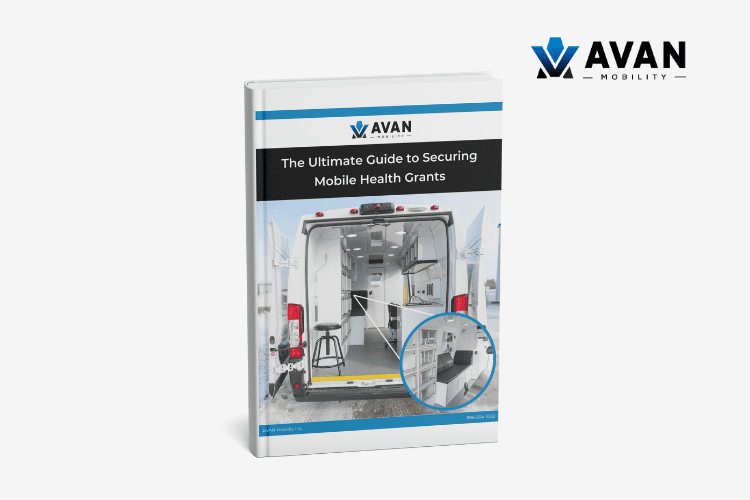The mobile wound care clinic cost ranges between $125,000 to $225,000 (more on that below).
Some organizations we talk to are unsure about the mobile wound care clinic cost and how to budget for one. If that sounds like you, you’re not alone. The truth is that wound care is a growing need, yet reaching patients who lack access to care is a major challenge. Without addressing this gap, preventable infections, hospitalizations, and even amputations can become harsh realities.
The risk of waiting: Patients who don’t receive timely wound care often face higher medical bills, longer recovery times, and lower quality of life. For organizations, this means missed opportunities to serve vulnerable populations effectively. But imagine the opposite—a mobile wound care clinic that brings treatment directly to patients, reducing hospital visits and saving lives.
At AVAN Mobility, we’ve spent over 10 years designing vehicles for organizations like yours and CalOptima that break down barriers to healthcare and transportation. Our focus is simple: saving lives by bringing care to those who need it most. From accessible vans to fully equipped mobile wound care clinics, our solutions are built for reliability and impact.
We also know we’re not the only option out there, and that’s why this guide is focused on giving you the facts—not sales pitches.
This article covers:
- The price range for mobile wound care clinics
- Costs of some of the customization options
- Extra fees you should know about
Let’s break it all down so you can make the best decision for your organization. Keep in mind that all costs highlighted in this article are subject to change and are for informational purposes only.
What is the cost of a mobile wound care clinic?
As we mentioned earlier, the mobile wound care clinic cost usually falls between $125,000 and $225,000.
Why such a big price range? It depends on what your clinic needs. Some organizations stick with a basic setup, while others add upgrades to handle special equipment, hotter climates, or rough roads.
Base models cost closer to $125,000 and come with everything you need to get started.
Fully loaded models can reach $225,000, especially if you need custom features or equipment.
Why Do Custom Features Affect the Price?
Adding custom features makes your mobile wound care services better for the patients you serve. However, those upgrades also increase the price.
Here are a few examples:
Hot weather areas: If you’re working in states like California or Texas, you may need a high-efficiency air conditioner to keep staff and equipment cool.
Better lighting: Clinics that work evenings or in dim areas often add extra lighting to make treatments easier.
More equipment: Some clinics need specialized wound care tools or diagnostic machines to handle more complex treatments.
Off-road access: Teams working in remote areas, like rural Montana, sometimes add the Trail Edition Upgrade to handle better on gravel roads and rugged terrain.
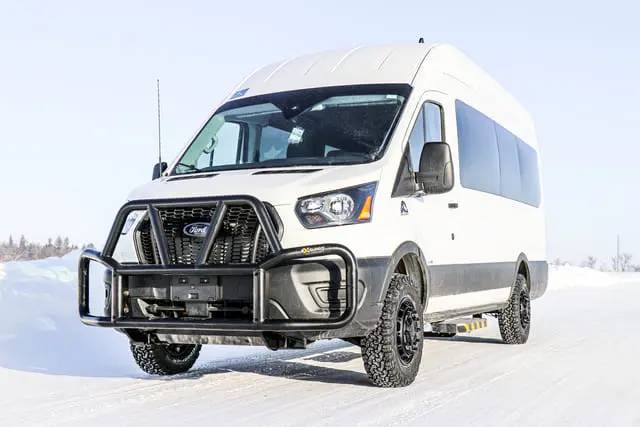
Customizing your mobile wound care clinic helps it meet your needs, but it’s important to factor those upgrades into your budget.
Next up: We’ll take a closer look at the specific costs of customizing a mobile wound care clinic so you can plan ahead.
How much does it cost to customize a mobile wound care clinic?
Customizing a mobile wound care clinic lets you build a unit that fits your team’s needs and the communities you serve. These upgrades can make a big difference when you’re treating patients in big cities or rural areas.
Here’s a look at some of the most common customization options and what they cost.
Awning – $5,000
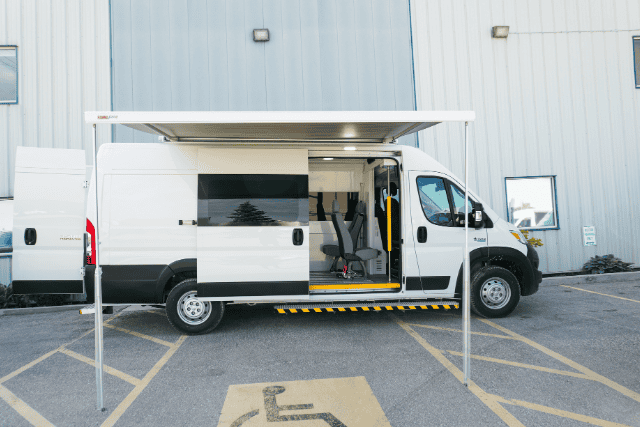
An awning adds shade outside the clinic, which is perfect for warmer states like Texas, Florida, and Arizona—where temperatures can reach over 100°F in the summer. It gives patients a place to wait comfortably and provides cover for outdoor treatments.
Extra windows – $2,000 per window
Extra windows let in more natural light, making the clinic feel brighter and more welcoming. This can be especially helpful in areas like Alaska, where winters are dark and daylight hours are short.
Additional lighting options – $1,500

Lighting upgrades are useful for clinics that operate in the early mornings or evenings, especially during winter months in states like Minnesota and Maine that see less daylight. Proper lighting also makes wound assessments more accurate.
Individual seating options – $1,500
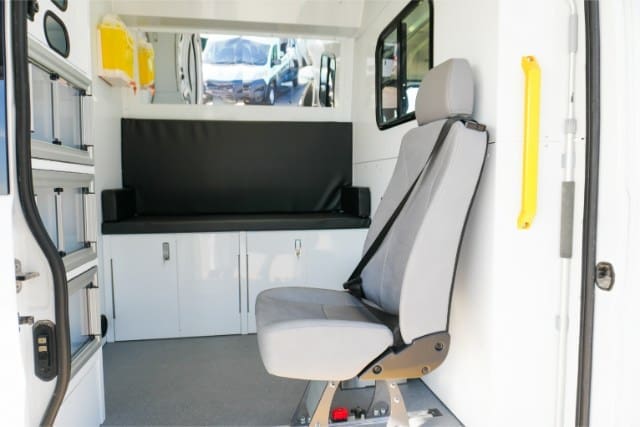
Comfortable seating helps patients feel more at ease during their visit. This is important for treating chronic wounds, which are common in seniors—especially in states like Florida, where 21% of the population is 65 or older.
Medical equipment – $2,500 to $75,000

Medical equipment costs can vary a lot and range between $2,500 and $75,000, depending on what your organization needs. Clinics that handle diabetic wound care—which affects 1 in 10 adults in the U.S.—may need portable X-ray machines or wound vacuum devices for faster treatment.
Tinted windows with locks – $2,000
Privacy is a big deal in healthcare. Tinted windows keep patient treatments confidential and help meet HIPAA compliance rules. Adding locks also secures expensive equipment and medications when the clinic is parked overnight.
Grid bars for windows – $1,500
Grid bars add another layer of security, especially in urban areas like Chicago or Detroit, where theft rates are higher. They’re also helpful for clinics traveling through remote locations, giving peace of mind to staff working in unfamiliar areas.
Customizing for comfort, security, and efficiency
These upgrades don’t just make a mobile wound care clinic look better—they make it work better. Whether you’re battling the heat in Arizona, managing low light in Alaska, or traveling rough roads in Montana, the right custom features can help your team provide care wherever it’s needed.
Next up: We’ll cover the extra fees you should know about so there are no surprises when planning your budget.
Extra fees to budget for a mobile wound care clinic
When planning your budget for a mobile wound care clinic, it’s important to factor in some additional costs that go beyond the base price.
Here’s a breakdown of common fees to keep in mind:
Sales Taxes
Taxes vary depending on the state where you register your clinic. For example, in California, the sales tax rate is 7.25%.
Example:
- Van price: $150,000
- Sales tax (7.25%): $10,875
- Total cost with tax: $160,875
If you’re operating in other states, make sure to check the local sales tax rates to avoid surprises.
Delivery Fees – $6,500
A shipping fee covers the cost of having your mobile wound care clinic delivered to your location. This fee covers the cost of secure transport to ensure your clinic arrives safely and ready to use. Since these vehicles are fully equipped with sensitive medical equipment, safe delivery is a top priority.
Administrative Fees – $1,000
Administrative fees cover the behind-the-scenes work needed to finalize your purchase and keep the process running smoothly. This includes coordinating paperwork, handling payments, and managing timelines for production and delivery. While it might not seem like much, this fee helps streamline operations and reduces the chances of costly delays or mix-ups.
Deposit – $50,000
A deposit is required to confirm your order and begin the build process. This upfront payment secures your spot in our production schedule and allows the work to start right away.
Mobile wound care clinic cost: From questions to decisions

You likely came to this article because you’re considering a mobile wound care clinic but weren’t sure about the costs or how to budget for one. We get it—investing in a mobile unit is a big decision, and knowing what to expect can make the process less overwhelming.
After reading this guide, you’ve learned about the price range for a mobile wound care clinic, how customization options can impact costs, and the extra fees to include in your budget. More importantly, you now have a clear picture of what it takes to create a clinic that fits your needs and helps you deliver wound care services wherever they’re needed most.
At AVAN Mobility, we know every community is different, and we’re committed to helping you build a mobile wound care clinic that meets your unique needs—whether that’s treating patients in busy urban centers or remote rural areas. We’re here to support you every step of the way as you expand access to mobile wound care services.
If you have any questions about mobile wound care clinics, click the button below to talk to a mobility expert who can help you take the next step.
